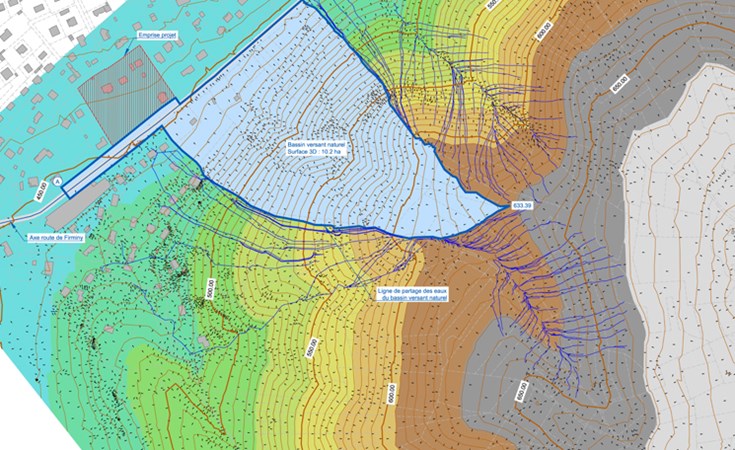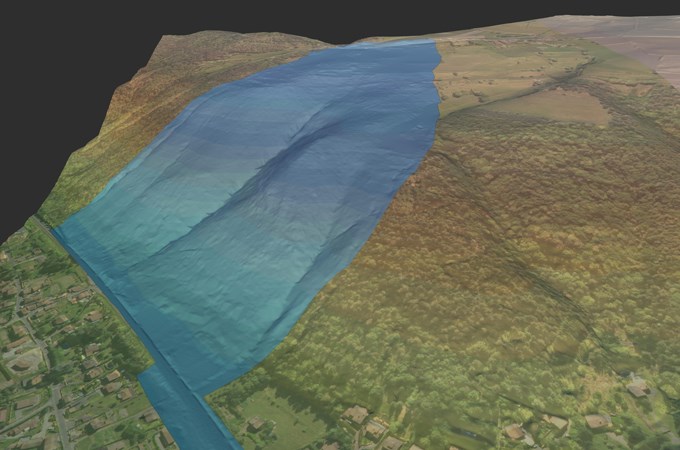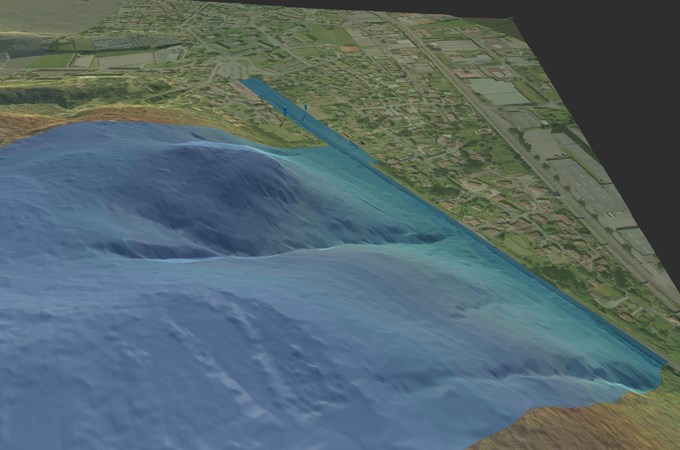The Mag
Discover all the news of the Fondasol group
27/03/2023
 Multiple fields
Multiple fields
27/03/2023
Depending on the planned location of a construction project, the work done by hydrogeologists on rainwater management can include determining the natural drainage basin and its potential impact on the project.
Unique, delimited by the watershed divide between two drainage basins, a drainage basin corresponds to the total surface area receiving the water circulating naturally towards the same watercourse or groundwater body.
Using the IGN's ALTI® data, our BIM teams have managed to model the information to be able to analyse the water runoff flows, determine the area of the drainage basin and its impact on the project.

Several processing operations carried out on the RGE ALTI® data accessible on the IGN site will allow the relevant data to be imported into our modelling tool in order to generate the digital elevation model.
Once the DEM has been generated, several relief visualisation or analysis tools are used, which all contribute to determining the natural drainage basin:

The identification of drainage basins is based on the analysis of directions of flow on triangulated surfaces, coupled with the dynamic analysis.
The analysis work allows us to determine: